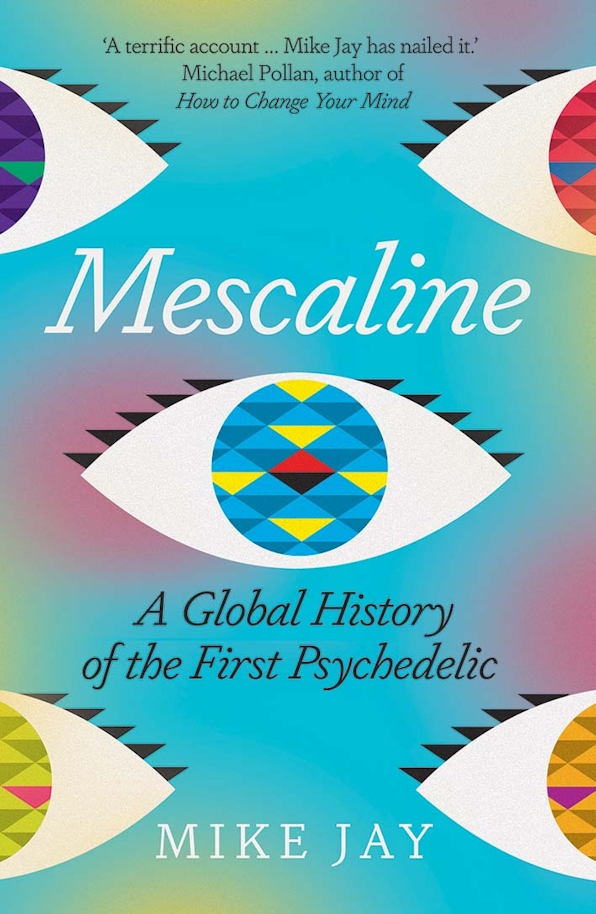VICE: How long have people been tripping on mescaline?
Mike Jay: The earliest physical evidence of its use are effigies made of dried peyote cactus preserved in the Shumla caves, on the Texas side of the Rio Grande, that have been radiocarbon dated to 4000 BCE. There’s also evidence around this time for the use of other plant psychoactives: tobacco and coca leaf in the Andes, DMT-containing plants in the Amazon, opium, and cannabis across Europe and Asia, and beer brewing in the Middle East.
There’s an amazing carving in a very early temple site in Peru, about 1000 BCE, of a fanged, clawed shaman figure holding a mescaline-containing San Pedro cactus. It looks as if this was a pilgrimage site where ceremonies were conducted that involved processions and subterranean passages, and probably DMT-containing snuffs and other mind-altering plants as well as San Pedro. The term "psychedelic" originated in an exchange between Aldous Huxley and the psychiatrist Humphry Osmond, after Huxley’s first mescaline trip in 1953.
What exactly is mescaline, and how is it different from other psychedelics?
Mescaline is an alkaloid that occurs in nature in two families of cacti: the San Pedro in the Andes and the peyote in Mexico, and a bit of what’s in Texas now. It’s a phenethylamine, biosynthesized by the cacti from the amino acid phenylalanine, which is also present in foods such as eggs, milk, soybeans, breast milk, and in trace amounts in the human brain.
This makes it different from other psychedelics such as LSD, psilocybin, and DMT, which are tryptamines, derived from a different amino acid, tryptophan. Other mind-altering phenethylamines include amphetamine and MDMA. Mescaline has some effects that are similar to these, though it’s also intensely visual and trippy. Compared to other psychedelics it's more physical, with an intense body load [a tactile sensation] that can be experienced as euphoria, or nausea, or both. It’s slower to cross the blood-brain barrier, so onset time is longer—up to two hours—and it also lasts longer, around 12 hours.
What part did the drug play in ancient Mexican culture?
When the Spanish arrived in Mexico they found peyote being traded and used as a sacrament. They noted that the people who used it saw visions, which their priests believed to be the work of the Devil. But they also recorded some Nahua [Aztec] prayers and songs which talk about it as a divine plant that takes people to the House of the Sun, a world of light and beauty.
The Spanish writings describe two different forms of peyote ritual. There’s a healing ceremony, where a curandero [doctor] uses it to divine the cause of an illness or a curse or to see future events and distant places. Also, among the tribes—such as the Huichol—in the north of Mexico, where the peyote grows, they witnessed ceremonies where villagers would eat or drink peyote and dance around a fire all night in a communal trance or frenzy.
